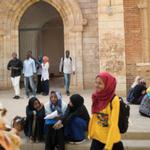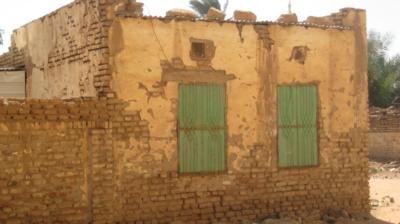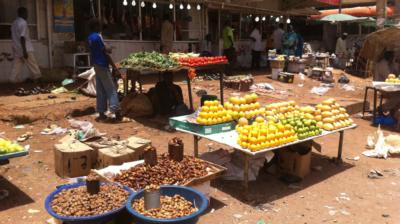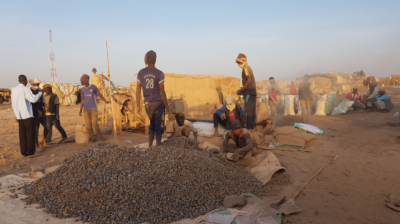Al-Mahdiya continues to haunt Sudan
One particular event that shaped the formation of the Sudanese state can help us understand the current war: The battle of Karari in Omdurman in 1898, a battle that ended the Mahdiya state in Sudan and ushered in Anglo-Egyptian Sudan.
In a live interview on Al-Jazeera TV station, Abdelrahman Al-Kheir, an advisor working with the Rapid Support Forces (RSF), the paramilitary group that is now fighting the Sudan Armed Forces (SAF) to control the Sudanese state, claimed that the RSF was in reality established 130 years ago, and that it is part of the movement that led to the establishment of the contemporary Sudanese state.
For those not familiar with Sudan’s contemporary history, this statement probably does not ring particularly well nor true. To understand the background for Al-Kheir’s argument, we have to go back to the 1880s and the Mahdiya state. Especially what happened in the years between 1885-1898 can help us unpack why the RSF and the social base it claims it represents continues to be haunted by it.
The rise of the Mahdiya
In 1881, Muhamed Ahmad Al-Mahdi, a young Sufi man born on Lubab, a small island near Dongola in present-day Northern state, ended the sixty-year long Ottoman rule over Sudan when he launched what Ahmed Abu-Shouk, a Sudanese scholar, has called “a movement of social, economic and political protest.”
The movement described by Abu-Shouk is widely referred to as Al-Mahdiya in Sudan and the Mahdist state in colonial literature. Initially, Al-Mahdi announced to his community that he was a Mahdi - in Islamic belief this is a messianic deliverer who is said to arrive at the end of times to deliver justice. His claims to be the Messiah sparked controversy. Still, his firm stand against the Turkish rulers who had made themselves widely unpopular by example imposing high taxes on the communities and their violent rule and rampant corruption, secured him support from a wide social base. Al-Mahdiya represented an informal and then official connection between Riverine Sudan and most parts of present-day Kordofan and Darfur. To understand this, we have to know that most of present-day Northern, Central and Eastern Sudan was ruled under the Funj Sultanate, also known as the Sennar state, which rose in 1503 on the remnants of the last Christian Nubian kingdom of Alwa until it succumbed to the Turks in 1821. During that period, to its west and south-west were the Darfur sultanate and the Mosaabat sultanate in Kordofan. The Darfur sultanate had sour relations with Sennar over Mosaabat and at different times, one of them conquered Kordofan. In 1874, Al-Zubair Pasha, a controversial trader of ivory and slaves from Sennar conquered the Darfur sultanate. The sultanate continued to be in turmoil and was not fully integrated into Al-Mahdiya prompting the Sultan, Ali Dinar, to re-establish the Sultanate in 1898, sparing it two decades of freedom before British colonial forces annexed it after killing Dinar.
Al-Mahdiya represented an informal and then official connection between Riverine Sudan and most parts of present-day Kordofan and Darfur.
Throughout contemporary history, Al-Mahdiya as a period of interaction between most of the communities in the modern Sudanese state connection was seen to be the foundation of Sudan as a country and what unifies the people of Sudan.
The Second Mahdiya and its discontents
In 1885, under circumstances that some consider to be foul play, Al-Mahdi succumbed to his death. His successor, Al-Taaishi began his rule in 1885 in what came to be known as the second Mahdiya. Al-Taaishi’s brutality targeted and killed, from traditional leaders of tribes to Al-Mahdi’s inner circle. He forced his own ethnic group, the Taaisha, to relocate to Omdurman and began a wider campaign to subjugate communities in North, Central and Eastern Sudan. The second Mahdiya caused the largest organized and sporadic population movement in Sudan’s contemporary history, and it saw many large tribes scatter into North Kordofan and Al-Jazeera. The population almost halved due to famine and war.
As Al-Taaishi found himself empowered by his kinship and through force, much of his policy towards other groups was inspired by racism even though there were also leaders from those communities that were very much starstruck with the Mahdiya state and continued to fight along its side during many battles.
He called the communities of Northern and Central Sudan “Awlad Al Bahr” or “Awlad Al Jallaba” which translates into sons of the Nile or sons of the Jellaba, a word used to describe traders from Riverine communities. There is an argument over the origin of Jellaba, some argue it comes from their dress, the Jallabiya, others argue that it denotes bringing goods and there is an argument on the goods that are referenced here, the goods could refer to regular good items or slaves.
One of the common slogans said by Al-Taaishi and that was repeated by his allies was : the Jaali speak a lot, the Dangala eat dead animals and the Shaygia drink the Marisa ( a local alcoholic drink). Those three tribes were villainized.
By the end of his 13 years of rule, millions had perished, the worst famine to hit Sudan in its history was approaching, tribes were turned against each other, and corruption was rife. The end of Al-Taaishi happened after a series of battles led to the battle of Karrari in Omdurman, his capital city, in September 1898. Al-Taaishi fled Omdurman with a few followers before getting killed a few months later in Om Debakrat in present-day North Kordofan state.
Karrari holds a special status for Sudanese people although it pitted them against each other as one side fought with the Mahdiya and the other side fought with the British. Interestingly, Karrari is often painted as a national victory as the common tale tells us that at least 10,000 soldiers lost their lives that day as they faced the grand firepower of the British colonial power, however, the reality was that it was an internal struggle between the people that wanted a way out of the misery of Al-Mahdiya and those that were benefiting from it.
Karrari holds a special status for Sudanese people although it pitted them against each other as one side fought with the Mahdiya and the other side fought with the British.
It took many years for the colonial force to figure out Sudan. In 1899, they had captured much of present-day Central, Northern and Eastern Sudan and parts of Kordofan and by 1916, it had annexed Darfur and by 1922, the whole region including Dar Andoka which lies in present-day West Darfur were under Anglo-Egyptian Sudan.
The history of Al-Mahdiya and the colonial period is largely disputed, but the main idea was reflected in the Guresh 1 document. A document and a plan of action written by a group of intellectuals from the Arab nomadic tribes of Darfur and Kordofan in 1987. The document adopts a racist ideology against the African farming groups in Darfur, but the opening lines seem to explain deep levels of grievances against Riverine groups that are referred to as the inheritors of colonial rule and those are the three groups that were already targeted by Al-Taaishi and they are Jaaliya, Shaygia and Danagla.
The third Mahdiya
Although he denies any similarity, Hemedti himself seems to be inspired by Al-Taaishi and both of them are under the Al-Jeneid umbrella of groups which includes many nomadic groups in Western Sudan. The Daglo family he hails from is in control of the RSF at different levels and manages Al-Junaid, a conglomerate of many companies working in different industries such as mining and construction. In recent years, he has bought houses in Jabra at an alarming rate to facilitate his ever-increasing kinship moving to Khartoum. This is similar to how Al-Taaishi moved most of his tribe to Omdurman thus displacing thousands of families in Omdurman and Al-Jazeera. During this war which many refer to as the third Mahdiya, we are seeing a large-scale population movement that only happened during Al-Taaishi’s Mahdiya. A recent investigative article shows that RSF soldiers brought their families to settle into thousands of homes in at least 20 neighborhoods in Khartoum state. The article states that some soldiers looted homes and took back the loot to their respective states or countries while others brought their families to occupy the homes. Around this time, screenshots from books and articles about the history of Al-Mahdiya were shared to show that occupying homes were present during that period.
Al-Taaishi organized a personal elite force that was led by his son to protect him and it operated under its own budget. Just as Abdelrahim Daglo is the second head of the RSF and the other Daglo brothers occupy the senior ranks of the RSF as fighters and professional staff members. Al-Gony, Hemedti’s youngest and most educated brother has risen as his representative in foreign and internal circles making many experts understand that he could be his successor just as Al-Taaishi was grooming his son to be his successor.
Al-Taaishi and Daglo share a disdain of Riverine groups. While Al-Taaishi used the phrase “Awlad Al-Bahr” or “Jellaba”, the RSF uses a similar phrase on social media which is “Eyal Jellaba”, although Awlad mean sons, Eyal means children and its used as a way to belittle those communities.
The narrative against the Riverine groups which was present during Al-Mahdiya and found its way to Quresh 1 seems to seep into the RSF at all levels. The advisors and Hemedti are impacted by it, but their soldiers are very vocal about this resentment. A widely circulated video showed an RSF officer speaking to the public in what appears to be a mosque, he tells them that Sudan’s problem is in four tribes: Danagla, Shaygia, Jaaliya and Mahas and the Jaalia or Shaygia who he states are the most dangerous should just be shot and he encourages people to kill them. In an interview with Al-Zarqa TV, Ambassador Kamal Osman, who was kidnapped and detained by RSF for weeks said that the RSF has an issue with you if you have three characteristics: first, if you are from the following tribes: Jalyin, Shaygia and Danagla tribes and second, if you are an Islamist and third, if you are an officer in the Sudan Armed Forces.
The narrative against the Riverine groups which was present during Al-Mahdiya and found its way to Quresh 1 seems to seep into the RSF at all levels.
This discourse raises serious questions about the root cause of this war and its ramifications on the social fabric in Sudan.
Many of Sudan’s social problems could be traced back to Al-Mahdiya and most clearly to the last 13 years and this makes it difficult to use it as a platform to establish the national state because it instigated many grievances which continue to flood local folktales and poetry. My grandmother always used to say “do you think it is still Mahdiya?” to reference any act of injustice. The RSF is not only inspired by Al-Mahdiya’s political narrative, but also by its human rights abuses. Forced population movement, abuse against women and forced marriages as well as destruction of livelihoods were some of the characteristics of both periods.
Reconciling the past and the present
As a close follower of the RSF on social media, it is evident that Al-Mahdiya would continue to haunt Sudan. I’ve recently come across an understanding that it is a very thorny issue not because it was hailed by the successive governments as the foundation of the present state in Sudan, but because people have such conflicting accounts of what happened. For the RSF and its social bases, they see that they liberated Sennar from Ottoman rule and ushered in a national state while many from the areas affected by Al-Taaishi see it as a difficult period that they didn’t want to see repeated and continue to have grievances. Each country around the world has a discourse and this discourse continues to be protected because it explains how the communities came together and how the country was formed. Sudan lacks this national discourse and for this reason and because the politicians continued to ignore this painful history, the country was unable to achieve a national project which unites communities based on common interests.
For this reason, it is extremely difficult to resolve the current conflict with a political agreement that rewards politicians and war lords with positions. Any peace process requires a dialogue between communities, one that interrogates the social ills and one that tailors a new social contract if possible.
This Sudan blog post is written by Reem Abbas, writer and researcher.
The views expressed in this post are those of the author, and do not necessarily reflect the opinions of the SNAC project or CMI.





